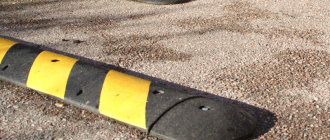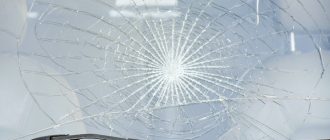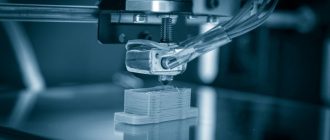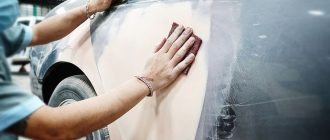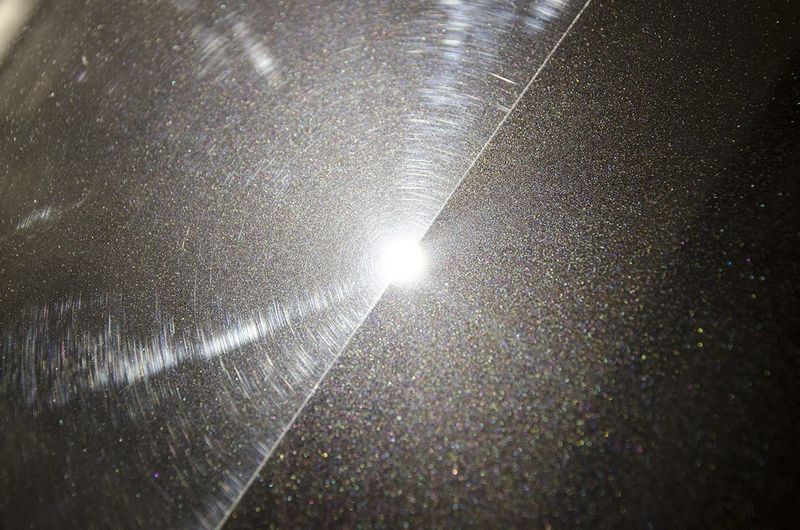
Spotting and Fixing Water Damage in Cars
Water damage in cars can be a serious issue that can lead to costly repairs if not addressed promptly. Whether it’s caused by a leaking roof, a cracked windshield, or a faulty window seal, spotting water damage early on is essential for fixing the problem before it escalates.
One of the most obvious signs of water damage in cars is the presence of moisture or wet spots on the interior surfaces. These can be found on the floors, seats, or even the dashboard. Additionally, a musty smell inside the car can also indicate the presence of a water leak.
Once water damage is detected, it’s important to take immediate action to prevent further damage. This can be done by drying out the affected areas thoroughly and removing any standing water. It is also recommended to inspect the electrical components of the car, as water damage can cause malfunctions.
When it comes to repairing water damage in cars, the first step is to identify the source of the leak and seal it properly. This may involve replacing damaged seals, fixing cracks in the windshield, or repairing a faulty window mechanism. Additionally, any damaged or moldy upholstery should be removed and replaced.
In conclusion, spotting and fixing water damage in cars is crucial to prevent further damage and costly repairs. By identifying the signs early on and taking prompt action, car owners can avoid extensive damage and ensure the longevity of their vehicles.
What causes water damage in cars?
Water damage in cars can be caused by a number of factors, including:
- Leaky seals: Faulty seals around windows, doors, and sunroofs can allow water to enter the vehicle.
- Clogged drains: Accumulated debris can block the drains in your vehicle, causing water to back up and potentially enter the interior.
- Flooding: If your car is exposed to flooding or heavy rain, water can seep into the vehicle and cause damage.
- Cracked windshield: A cracked or damaged windshield can allow water to enter the car during rainfall.
- Condensation: Excessive condensation inside the car can lead to moisture buildup and potential water damage.
- Improperly sealed body panels: If the body panels of your car are not properly sealed, water can penetrate and cause damage.
Spotting and addressing the causes of water damage in cars is crucial to prevent further damage and to ensure the safety and functionality of your vehicle. If you notice any signs of water damage, it is important to take immediate action in identifying the source of the problem and fixing it to avoid costly repairs.
Common signs of water damage
When it comes to cars, water damage can wreak havoc on different components and systems. It’s important to be able to identify the signs of water damage so that you can take the necessary steps in fixing the issue promptly. Here are some common signs you need to look out for:
1. Visible water stains or puddles: If you notice water stains or puddles inside your car, it’s a clear indication that there is water damage. Make sure to inspect the interior, including the floor carpets, seats, and trunk area.
2. Musty or mildew odor: A persistent musty or mildew smell is a sign that moisture is trapped somewhere inside your car. This odor indicates the presence of mold or mildew, which can cause health problems and damage to various materials.
3. Electrical malfunctions: Water damage can disrupt the electrical systems in your car. Look out for malfunctioning lights, power windows, central locking, or any other electrical issues. These problems may be caused by water infiltration into the wiring or control modules.
4. Corroded or rusty metal parts: Water can cause metal parts in your car to corrode or rust. Check areas like the battery, engine, suspension components, and undercarriage for any signs of corrosion or rusting.
5. Damaged upholstery or interior materials: Excessive water exposure can cause upholstery, carpeting, and other interior materials to become damaged. Look for discolored or distorted fabrics, sagging headliners, or swollen door panels.
If you notice any of these signs of water damage in your car, it’s essential to take action promptly. Ignoring water damage can lead to more extensive problems and costly repairs in the future. Consult a professional mechanic or auto body specialist to assess the damage and determine the best course of action for fixing it.
How to assess the extent of water damage
Water damage in cars can lead to a range of problems, including mold growth, electrical issues, and corrosion. It’s important to assess the extent of the damage to determine the appropriate repair steps. Here are some steps to help you assess the water damage:
1. Inspect for water spotting: Start by thoroughly inspecting your car’s interior and exterior for any signs of water spotting. Look for watermarks or stains on the seats, carpets, and dashboard. Water spotting can indicate the presence of water damage and give you an idea of where the water may have entered the car.
2. Check for visible damage: Look for any visible damage such as rust, peeling paint, or warped panels. These signs can indicate that water has penetrated the car’s body and caused damage to the underlying structures. Pay special attention to areas around windows, doors, and the trunk.
3. Assess the electrical system: Water damage can cause electrical issues in cars, so it’s important to check the functionality of your car’s electrical system. Test all the lights, switches, and accessories to ensure they are working properly. Look for any signs of electrical malfunctions, such as flickering lights or malfunctioning power windows.
4. Smell for mold: A musty or moldy smell in the car can indicate the presence of mold growth, which is a common problem after water damage. Use your nose to detect any unusual odors and inspect the interior for signs of mold or mildew, such as black spots or fuzzy growth on surfaces.
5. Look for water in unexpected places: Water can find its way into hidden areas of the car, such as the trunk, under seats, or inside the frame. Take a close look at these areas and check for any signs of water accumulation or dampness.
6. Consult a professional: If you’re unsure about the extent of the water damage or if you suspect there may be hidden damage, it’s best to consult a professional. A trained technician can thoroughly assess your car and provide recommendations for repairs.
Remember, assessing the extent of water damage in cars is crucial to determine the appropriate repair actions. It’s important to address water damage promptly to prevent further issues and ensure the safety and longevity of your vehicle.
Steps to repair water damage in cars
Fixing water damage in cars can be a challenging task, but it is essential to address the issue promptly to prevent further damage. Follow these steps to repair water damage in cars:
1. Identify the source of water: Before proceeding with any repairs, it’s crucial to determine where the water is coming from. Check for leaks in the windows, sunroof, door seals, or any other areas that may be allowing water inside the car.
2. Dry out the interior: Begin by removing any wet floor mats, carpets, and upholstery. Use a wet/dry vacuum to extract as much water as possible. Open all doors and windows to promote air circulation and accelerate the drying process. Consider using fans or dehumidifiers to speed up the drying process.
3. Inspect for mold and mildew: Water damage can lead to the growth of mold and mildew, which can cause health issues. Thoroughly inspect the interior for any signs of mold or mildew, such as a musty smell or visible spots. If mold or mildew is present, use a mixture of water and vinegar to clean affected areas.
4. Treat electronics and electrical components: Water damage can wreak havoc on a car’s electrical system. Check all electrical components, such as the battery, fuse box, and wiring harnesses, for signs of damage. If necessary, consult a professional mechanic or electrician to repair or replace any affected parts.
5. Repair or replace damaged parts: Once the interior is fully dry and any mold or mildew is addressed, assess and repair or replace any damaged parts. This may include carpeting, upholstery, door panels, or other components that were affected by the water damage.
6. Test for lingering issues: After completing repairs, it’s essential to test your car for any lingering water issues. Use a hose to simulate rain and check for any new leaks or signs of water entering the car. Address any remaining issues promptly to prevent further damage.
7. Take preventative measures: To avoid future water damage to your car, take preventative measures such as regularly inspecting seals and weatherstripping, parking in covered areas, and promptly addressing any leaks or water-related issues.
By following these steps and promptly addressing water damage in cars, you can prevent further damage and ensure that your car remains in good condition.
Removing water from the interior
If you spot water damage in your car’s interior, it is essential to remove the water as soon as possible to prevent further damage. Here are the steps you can take to remove water from the interior of your car:
1. Identify the source of the water: First, you need to identify the source of the water damage. Check for any leaks in the windows, doors, or sunroof. Often, water can enter through damaged seals or blocked drainage channels.
2. Dry the affected area: Use absorbent towels, rags, or a wet/dry vacuum cleaner to dry the affected area thoroughly. Remove all the floor mats, seat covers, and other removable items from the car to facilitate the drying process.
3. Create air circulation: Open all the windows and doors to promote air circulation inside the car. If possible, use fans or a dehumidifier to speed up the drying process and prevent the growth of mold or mildew.
4. Inspect and assess the damage: Once the interior is dry, inspect and assess the extent of the water damage. Look for any signs of water stains, discoloration, or foul odors. These may indicate deeper damage that needs fixing.
5. Fix the underlying issue: Once you have identified the extent of the damage, fix the underlying issue that caused the water damage in the first place. This may involve repairing seals, unclogging drainage channels, or replacing damaged parts.
6. Clean and sanitize the interior: After fixing the underlying issue, clean and sanitize the interior of the car to remove any remaining bacteria or odor. Use appropriate cleaning products and techniques suitable for the car’s upholstery and surfaces.
7. Take preventive measures: To avoid future water damage, take preventive measures such as regularly inspecting and maintaining seals, keeping drainage channels clear, and parking the car in covered areas during heavy rainfall.
By following these steps, you can effectively remove water from your car’s interior, spot any damage, and take the necessary steps to fix and prevent further water-related issues.
Drying the affected areas
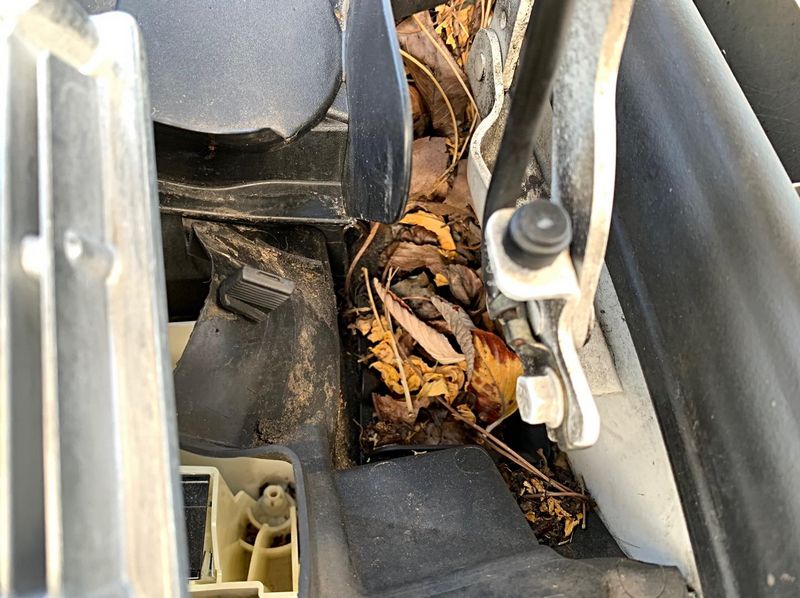
After identifying and fixing the source of water damage in cars, it is crucial to properly dry the affected areas to prevent further issues. Water can seep into various crevices and components, causing corrosion, mold, and mildew.
First, use a wet/dry vacuum or absorbent towels to soak up as much water as possible. Be thorough and reach into confined spaces, such as under seats and in the trunk.
Next, leave the car windows and doors open to promote air circulation and aid in the drying process. If the weather permits, parking the car in direct sunlight can also help expedite drying.
For hard-to-reach areas or surfaces that are difficult to dry, specialized fans or dehumidifiers can be used. These devices assist in removing moisture from the air and accelerate the drying time.
Throughout the drying process, keep an eye out for any signs of mold or mildew. These can appear as dark spots or a musty odor. If any mold is found, it is crucial to clean and disinfect the affected areas to prevent health issues and further damage.
Remember that addressing water damage in cars promptly and thoroughly is essential to preventing long-term problems. By properly drying the affected areas, you can minimize the risk of corrosion, mold, and further damage to your vehicle.
Inspecting electrical components
When it comes to fixing water damage in cars, it is essential to inspect all electrical components thoroughly. Water can cause significant damage to the electrical system of a vehicle, leading to malfunctions and safety hazards. Here are some steps to follow in order to properly inspect and repair any water damage to the electrical components:
- Check the fuse box: Start by examining the fuse box for any signs of water intrusion. Look for wet fuses or corrosion on the connections. Replace any damaged fuses and clean the area if necessary.
- Inspect the wiring: Carefully inspect all wiring harnesses for water damage. Look for frayed wires, discolored insulation, or signs of water accumulation. Replace any damaged wiring to ensure proper electrical connections.
- Examine connectors and terminals: Check all connectors and terminals for moisture or corrosion. These small components are prone to water damage, which can lead to poor electrical conductivity. Clean or replace any damaged connectors or terminals to prevent further issues.
- Test electrical components: After inspecting and repairing any obvious water damage, test all electrical components in the car. This includes the lights, wipers, windows, radio, and any other features that rely on electricity. If any malfunctions occur, further investigation may be necessary.
- Consider professional help: If you are unsure about your ability to properly identify and repair water damage in the electrical system of your car, it is best to seek professional assistance. A qualified mechanic or technician will have the necessary expertise and tools to effectively fix any water-related issues.
Spotting and addressing water damage in the electrical components of a car is crucial for maintaining the vehicle’s functionality and safety. By inspecting and repairing any damage promptly, you can prevent further issues and ensure a reliable driving experience.
Mold prevention and treatment
Mold can be a serious issue when it comes to water damage in cars. If not treated properly, mold can quickly spread and cause further damage to the interior of the vehicle. Here are some tips for preventing and treating mold:
|
|
By following these prevention and treatment steps, you can help minimize the risk of mold damage in your car and maintain its interior in good condition.
Repainting an d sealing the affected areas
One of the most visible signs of water damage in a car is spotting or discoloration on the exterior surface, particularly on the paintwork. To fix this issue, repainting the affected areas is necessary.
Before repainting, it’s important to properly clean and dry the damaged areas. Use a mild detergent and water to gently clean the surface, and allow it to dry completely. This will ensure that the new paint adheres properly and provides a seamless finish.
Once the damaged areas are clean and dry, it’s time to start repainting. You will need to select a paint color that matches the original or existing paintwork. To achieve a professional finish, it’s recommended to use automotive paint and follow the manufacturer’s instructions for application. Apply the paint in thin, even coats, allowing each coat to dry before applying the next one.
After the paint has fully dried, it’s important to seal the affected areas to protect them from any further water damage. This can be done using a clear coat or automotive sealant. Apply the sealant according to the manufacturer’s instructions, ensuring that it covers the entire repainted area.
Once the sealant has dried, inspect the repainted and sealed areas to ensure a smooth and even finish. If necessary, you can use a fine-grit sandpaper to gently buff out any imperfections. Finally, apply a coat of wax to the repainted areas to protect the new paintwork.
When to seek professional help
If you have noticed significant water damage in your car and you don’t have the necessary knowledge or experience to fix it yourself, it’s best to seek professional help. Water damage can be especially tricky to repair, as it can quickly lead to further damage if not properly addressed.
Professional auto technicians have the expertise and equipment needed to properly assess and fix water damage in cars. They can identify any underlying issues and perform the necessary repairs to prevent further damage. Additionally, they can also help in spotting any hidden damage that may not be immediately noticeable.
Remember, water damage can cause serious problems in cars, such as electrical malfunctions, mold growth, and structural damage. It’s important to address any damage as soon as possible to prevent these issues from worsening. Seeking professional help ensures that the damage is adequately repaired, reducing the risk of future problems and ensuring the longevity of your car.
In conclusion, if you are unsure about the extent of the damage or lack the skills and knowledge to fix it yourself, it’s best to trust the experts and seek professional help. They have the necessary experience and tools to efficiently repair water damage in cars and ensure the safety and functionality of your vehicle.
Question-answer:
What are some signs of water damage in a car?
Some signs of water damage in a car include a musty or moldy smell, water stains or wet spots on the upholstery or carpeting, foggy windows, electrical issues, and a waterlogged engine.
How can I check for water damage in my car?
You can check for water damage in your car by inspecting the upholstery and carpeting for stains or wet spots, looking for a musty or moldy smell, checking windows for fogging, and examining the engine for signs of water damage.
What should I do if my car has water damage?
If your car has water damage, you should take it to a professional mechanic or body shop to assess the extent of the damage and make the necessary repairs. It is important to address water damage as soon as possible to prevent further issues such as mold growth or electrical problems.
Can I repair water damage in my car myself?
While some minor water damage repairs can be done yourself, it is recommended to have a professional assess the damage and make the necessary repairs. Water damage can be complex and may require specialized equipment and knowledge to properly fix without causing further damage.
